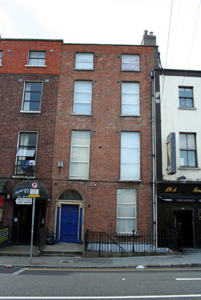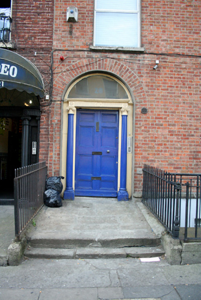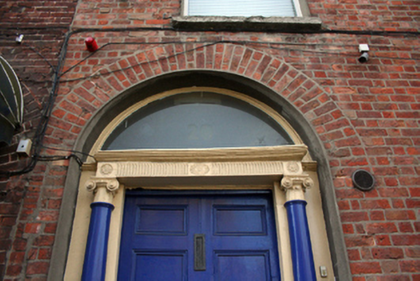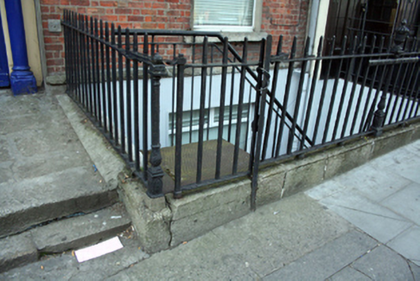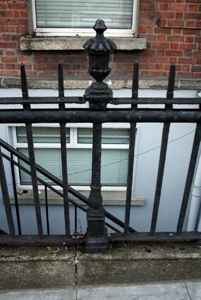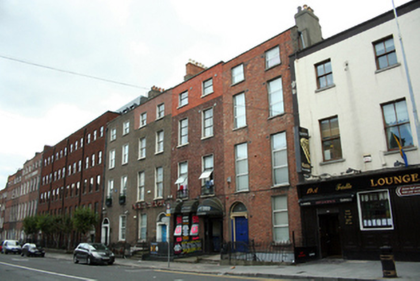Survey Data
Reg No
50010879
Rating
Regional
Categories of Special Interest
Architectural, Artistic
Original Use
House
In Use As
Apartment/flat (converted)
Date
1790 - 1800
Coordinates
315563, 235322
Date Recorded
23/09/2011
Date Updated
--/--/--
Description
Terraced two-bay four-storey house over exposed basement, built c.1795. Now in use as apartments. Pitched slate roof behind rebuilt red brick parapet wall with squared granite coping. Shouldered rendered chimneystack to north abutting chimneystack of No. 19, with moulded clay pots. Downpipe to junction with No. 19 continuing to basement. Flemish bond red brick walls with moulded granite plinth course over rendered walls to basement. Square-headed window openings with gauged red brick voussoirs, patent rendered reveals, granite sills and mixed replacement uPVC and aluminium windows throughout. Round-headed door opening with rendered reveals and painted stone doorcase comprising engaged Ionic columns supporting entablature with fluted frieze and floral medallions surmounted by plain fanlight. Replacement timber panelled door opening onto granite platform bridging basement area, with stepped approach. Square-headed door opening to basement with replacement timber panelled door. Moulded granite plinth with spearheaded cast-iron railings enclosing basement area, with central rail post on street displaying decorative urn finial. Cast-iron gate allows access from street to paved basement area via recent metal steps.
Appraisal
Frederick Street North opened in 1795, with development continuing into the early decades of the nineteenth century. It formed a connecting route from Parnell Square, through the 'Barley field' depicted on Wilson's Directory maps, to the north. Despite some recent alterations to the fenestration, No. 20 has maintained much of its historic character and form through the retention of various items of historic fabric including, most notably, a finely executed doorcase and pleasant enclosing cast-iron railings. The barley fields north of Cavendish Row were surveyed by Thomas Sherrard in 1789 and in 1790 a plan of Frederick Street North was laid before the Wide Street Commissioners. It was approved by the Wide Streets Commission and its development is documented in the Wide Streets Commission's minutes of the time.

